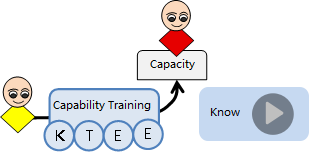|
|
| Successful Case
|
| Continental Automotive Electronics |
| Bosch Automotive Electronics |
| Schaeffler electric drive |
| Joyson Automotive Electronics |
| Huawei Technical Center |
| BMW Automotive Research and Development Center |
| Geely Auto Research Institute |
| Byd Automotive Research Institute |
| |
|
|
|
|
|
|
| Courses > Modeling |
|
 |
|
Modeling Java or.Net applications with Rose XDE
|
Views 
|
|
 |
|
| Zhang Teacher
|
| Founded uml.org.cn in 2001, 2005 IBM Rational User Group Best Speaker |
| |
|
|
| Time Location: Beijing, Shenzhen and Shanghai open classes based on registration |
| Course CostпЉЪ1000$/Person
|
|
|
|
| Internal Training: You can customize internal training according to the needs of the enterprise. |
|
 |
Authentication Method:
Understand the competency Model before training.
Ability evaluation after training:
Online Examination
Ability Analysis, give learning suggestions
The qualified person shall be issued a certificate as proof of vocational skill qualification
|
 |
|
|
| XDE is a new tool that Rational contributes to the efficient and effective development of software products. This course will introduce you to the role of XDE in the software development cycle. Describes how to create analysis models, design models, and data models, how to generate code and keep code in sync with models, how to use patterns in XDE models and create your own patterns, how to publish models and generate report materials, and how to create and use reusable resource specifications. This course is suitable for beginning and intermediate users of Rational XDE, as well as those interested in software development. |
| |
| Training Goal |
| Students learn how to use Rational XDE's capabilities in analysis, design, and development to improve application development efficiency and quality. Participants will also learn the concepts, ideas, and usage of design patterns, and learn how to use Rational XDE to apply defined patterns and create their own patterns by learning about Rational XDE's strong support for patterns. By using the power of patterns in the development process to maximize software reuse, improve software quality and accelerate software development process. |
| Training Target: Personnel engaged in enterprise application development; Software Project Manager; Software Development Manager; Application developers; Application architects, application designers, and others interested in Rational XDE. |
| Student Foundation: Have a certain foundation of Java language, have a certain understanding of design patterns. |
| Teaching Method:
Customized Course + Case Explanation + Group Discussion, 60% Case Explanation, 40% practice exercise |
| Training Content: 2 Days
|
Introduction to Rational XDE
|
1. Introduction to visual modeling
2. What is Rational |
| XDE and the software development life cycle |
1. XDE and Rational Unified Process
2. XDE and Extreme Programming
3. XDE and configuration management |
| Real application development analysis |
1. Project background
2. Existing architecture
3. Service analysis |
| Integrated use case management |
1. Introduction to demand management
2. Create a use case block diagram in XDE
3. Packaging use cases and roles
4. Integrated use case management
5. Create an active block diagram in XDE
6. Use case analysis
7. Exercise: Generate use cases and analysis models for time recording systems |
| Modeling Java and J2EE elements in XDE |
1. Generate a Java application project
2. Model Java elements in UML
3. Model Java elements in XDE
4. Build a design model
5. Design J2EE elements
6. Work with Java code
7. Exercise: J2EE application from analysis to design |
| Modeling the database with XDE
|
1. Object model and data model
2. Generate data model
3. Process views
4. Generate object models from data models
5. Generate the data model from the object model
6. Generate database from data model
7. Update the existing database
8. Reverse engineer the database
Exercise: Generate a database for a time recording system |
| Model publishing and reporting |
1. Generate a report
2. Publish the XDE model
3. Exercise: model publishing and reporting
|
| Usage pattern |
1. What is a pattern
2. Why use patterns
3. Pattern Explorer
4. Adopt patterns
5. Association and extension modes
6. Use pattern favorites
7. Practice: Adopt patterns
|
| "Gang of Four" mode |
1. Generative model
2. Structural patterns
3. Behavioral patterns
4. Practice: Consider patterns
|
| Introduction to the Reusable Resource Specification (RAS) |
1. Define resources
2. Use resources
3. Resources in XDE
|
| Generation pattern |
1. Generation mode
2. Pattern library
3. Association and extension mode
4. Generate a pattern version
5. Turn patterns into reusable resource specifications
6. Practice: Generate patterns
|
|
| |
|
|
|
|
|
| Consulting Objective
|
Help build model-driven analysis, design, development, testing |
| Scope Consultation |
Requirements Modeling, Architecture Modeling, Database Modeling, Code Modeling, Test Modeling.
|
| Consultation Method |
Model-driven development process training, modeling and management tool environment construction, combined with actual customer case demonstration, team practice guidance, model evaluation standards formulation, specification formulation |
| Successful Case |
Huawei Research and Development Center, Space Center of Chinese Academy of Sciences, Nanjing 14 Institute, China Mobile Research Institute and so on. |
| For more information:010-62670969пЉМ umlooo@hotmail.com
|
|
|
|
|